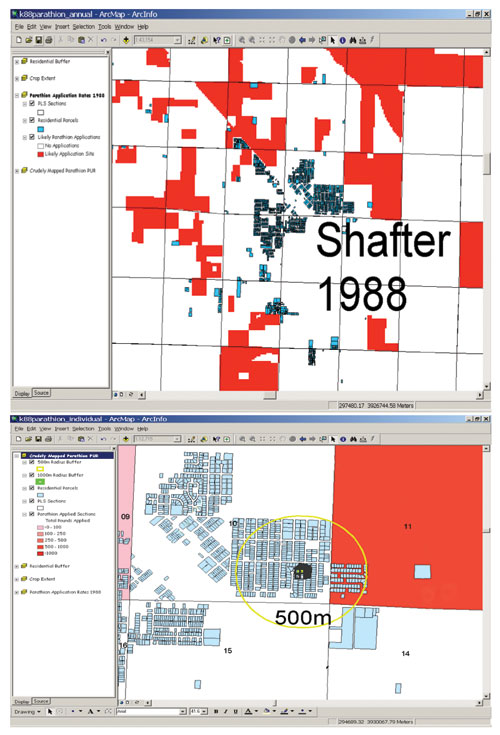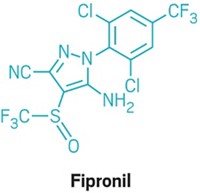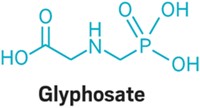Advertisement
Grab your lab coat. Let's get started
Welcome!
Welcome!
Create an account below to get 6 C&EN articles per month, receive newsletters and more - all free.
It seems this is your first time logging in online. Please enter the following information to continue.
As an ACS member you automatically get access to this site. All we need is few more details to create your reading experience.
Not you? Sign in with a different account.
Not you? Sign in with a different account.
ERROR 1
ERROR 1
ERROR 2
ERROR 2
ERROR 2
ERROR 2
ERROR 2
Password and Confirm password must match.
If you have an ACS member number, please enter it here so we can link this account to your membership. (optional)
ERROR 2
ACS values your privacy. By submitting your information, you are gaining access to C&EN and subscribing to our weekly newsletter. We use the information you provide to make your reading experience better, and we will never sell your data to third party members.
Environment
The Pesticide Connection: Timeline
Trail Of Clues: How Parkinson’s and pesticides got linked
by Lauren K. Wolf
November 25, 2013
| A version of this story appeared in
Volume 91, Issue 47
1976 Obscure case
University of Maryland grad student makes and shoots up a bad batch of drugs, gives himself Parkinson's-like symptoms (Psych. Res. 1976, 1, 249)
1982 Medical mystery
Six heroin addicts land in California medical facilities with signs of advanced Parkinson’s after injecting a poorly made designer drug
1983 Discovery disseminated
Neurologist J. William Langston (shown) and coworkers report in Science that the addicts' illness was most likely caused by MPTP
1983 Primate proof
Scientists at the National Institute of Mental Health inject monkeys with MPTP, creating an animal model of Parkinson's


1984 Culprit cornered
Scientists learn that MPTP itself is not a neurotoxin but that its metabolite MPP+ kills neurons in the brain
1984 Weed killer
MPP+ is identified as a once-promising herbicide called cyperquat (Nature 1984, DOI: 10.1038/311464a0)
1986 Epidemiology begins
Neurologist Ali H. Rajput and team report a correlation between rural living and Parkinson's for patients in Saskatchewan
1989 Surgical relief
Two of the addicts, George Carillo and Juanita Lopez, receive fetal stem cell transplants to repair the damage in their brains
"Not only George but Juanita was making steady progress. It seemed as if the grafts had established themselves and were making a functional difference to both patients’ lives.” - from “The Case of the Frozen Addicts”
1995 Tale telling
“The Case of the Frozen Addicts” by Langston and Jon Palfreman is published


1999 Pesticide testing
Researchers inject paraquat into mice, see a loss of dopamine-producing nerve cells in the substantia nigra (Brain Res. 1999, DOI: 10.1016/ S0006-8993(98) 01192-5)
2000 Animal model
J. Timothy Greenamyre and team demonstrate that rotenone produces Parkinson’s-like symptoms in rats
2007 Toxicity recognized
U.S. voluntarily restricts use of rotenone to nuisance fish


2007 Zero tolerance
The European Union bans the use of paraquat
2011 Pinpointing pesticides
FAME study reports that risk of having Parkinson’s is two to three times higher for pesticide users who have worked with paraquat or rotenone



2011 Public health
Beate Ritz and coworkers study California residents, find increased risk for people working near fields sprayed with a combo of paraquat, maneb, and ziram
2013 Synopsis study
Meta-analysis of 104 epidemiology studies finds that people exposed to pesticides in general and paraquat in particular are two times more likely to have Parkinson’s (Neurology 2013, DOI: 10.1212/WNL.0b01 3e318294b3c8)
"From a preventive perspective, we observed that the route of exposure … and the method of toxin application … has never been investigated. Risk appears to increase as the duration of exposure increases.”
2013 Contradictory results
Syngenta Crop Protection conducts experiment showing that paraquat doesn’t kill nerve cells when injected into mice
“What is clear is that the use of [paraquat] to provoke a statistically significant reduction in … neurons in the [substantia nigra] of the mouse brain is a more fragile process than is currently characterized in the published literature.”
To download a pdf of this article, visit http://cenm.ag/pesticides.





Join the conversation
Contact the reporter
Submit a Letter to the Editor for publication
Engage with us on Twitter